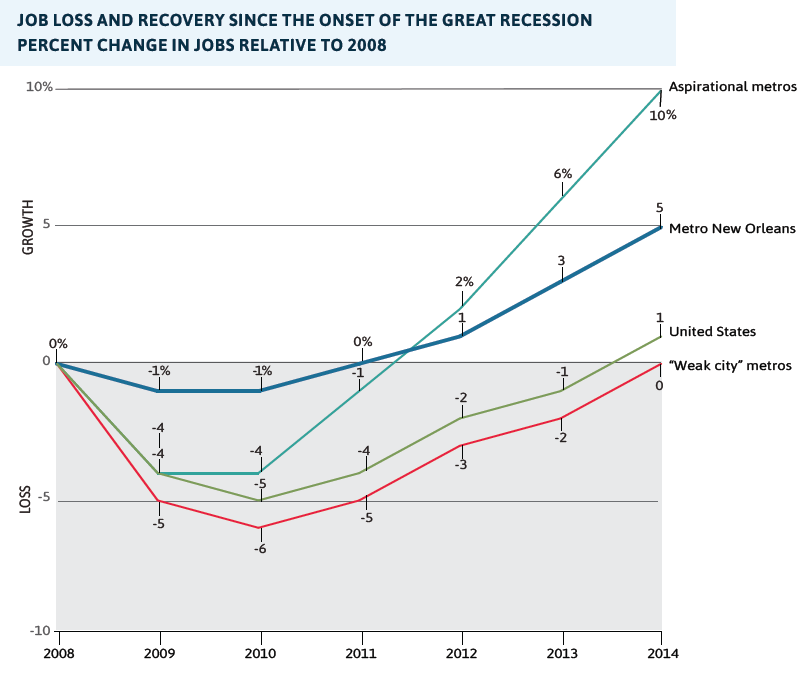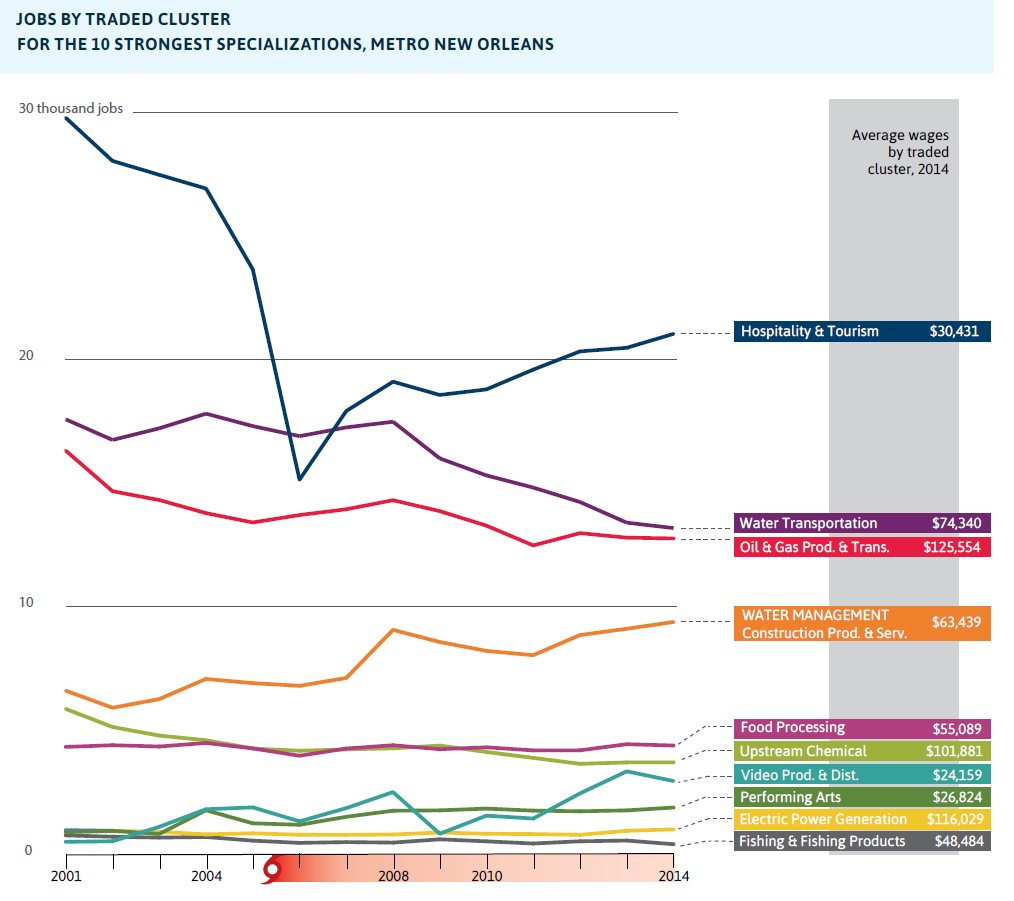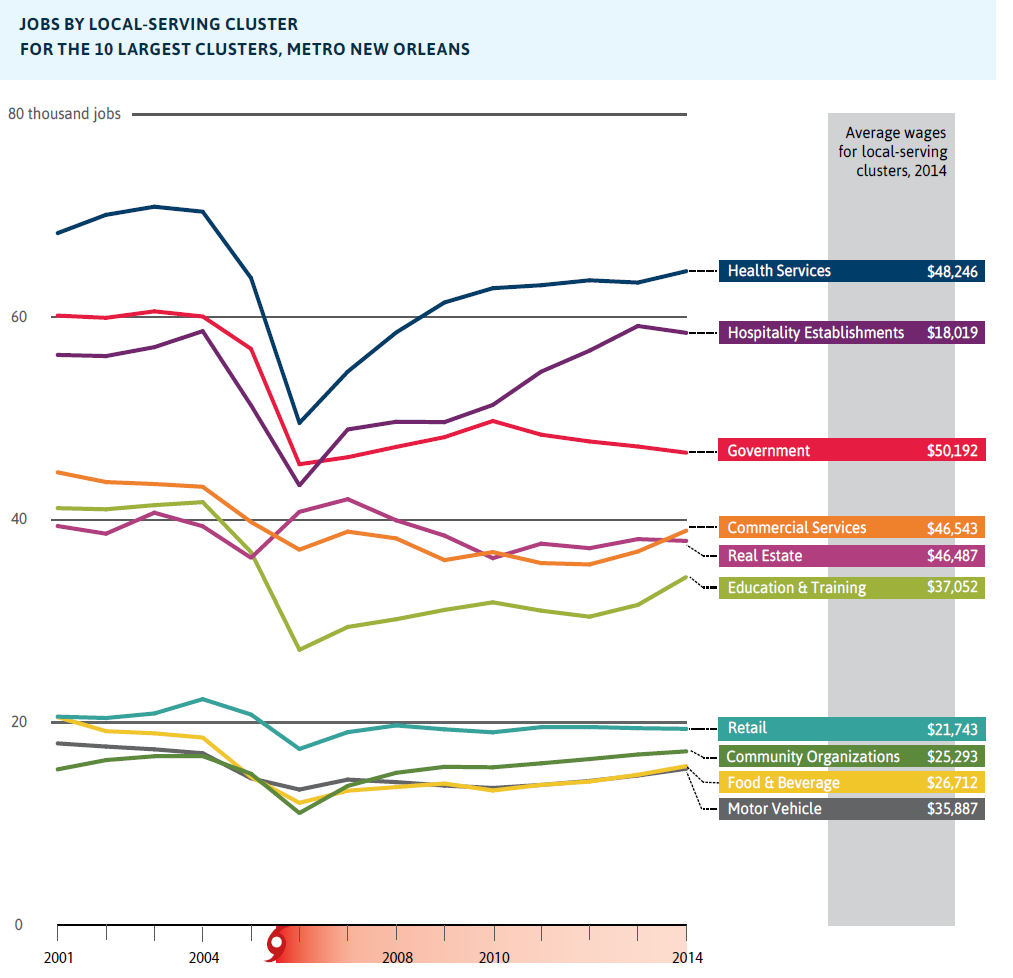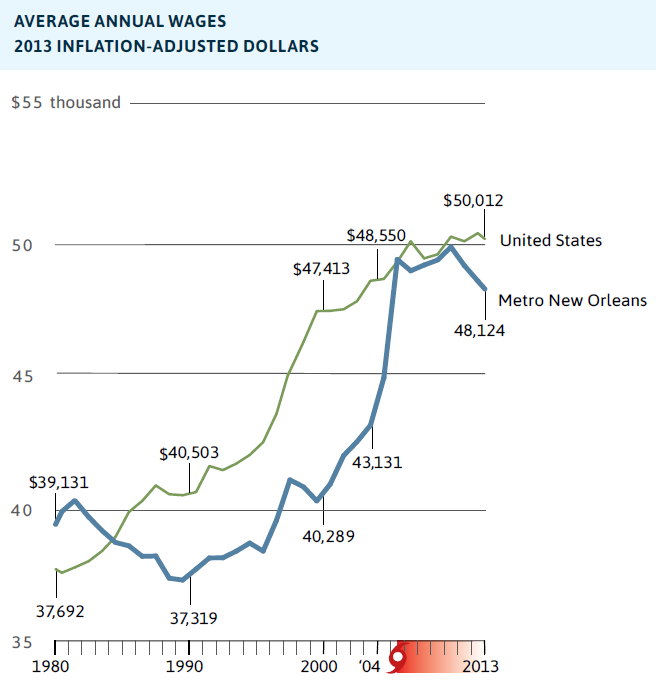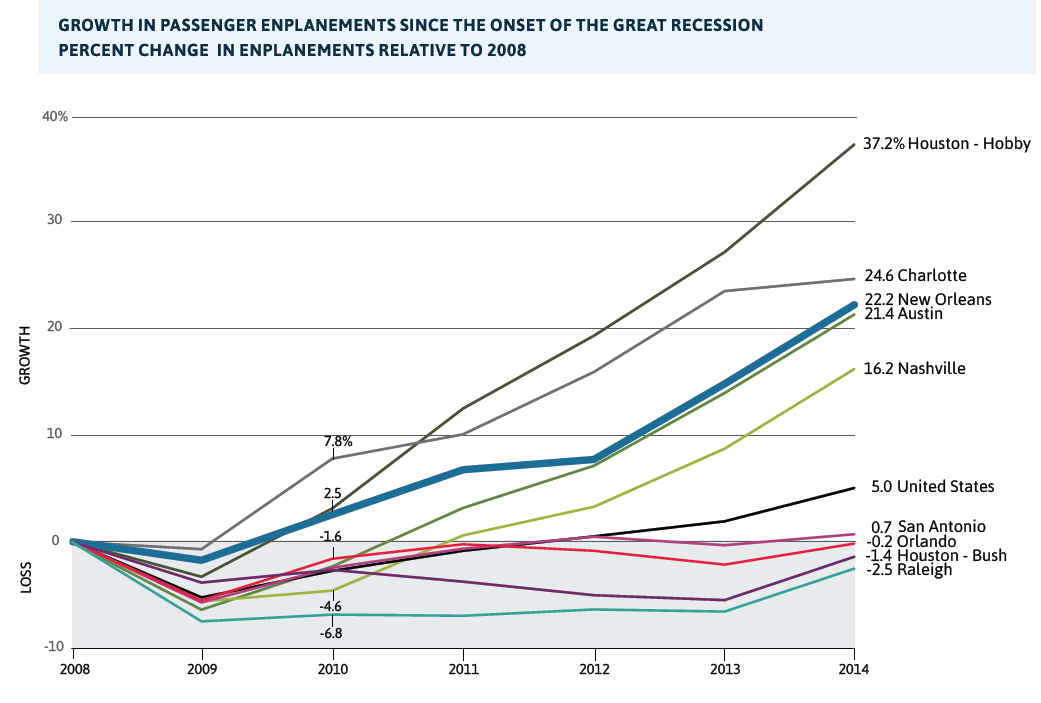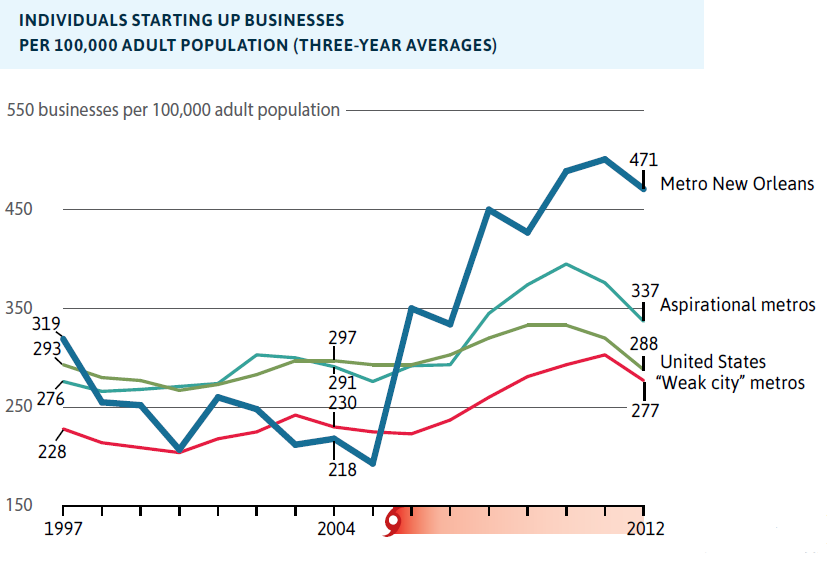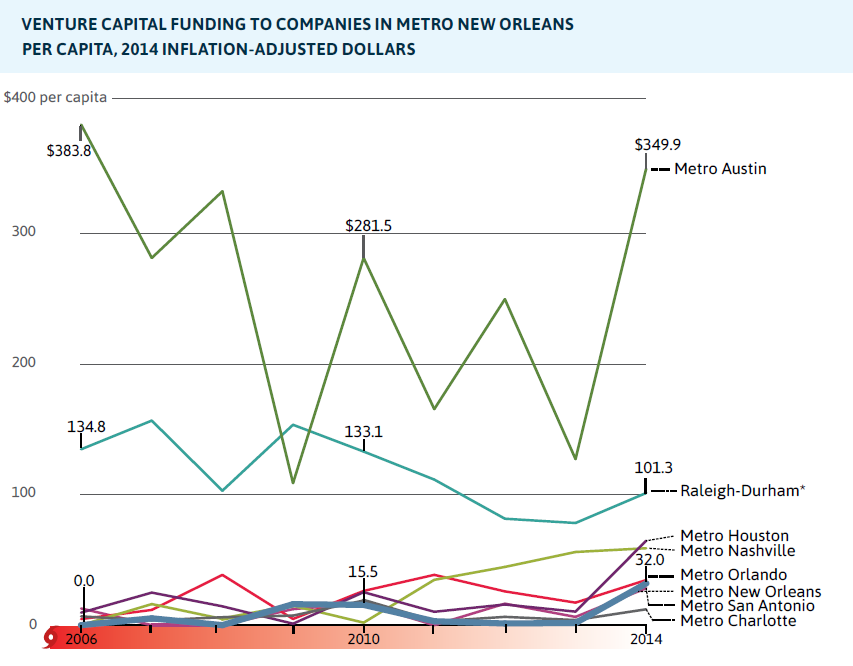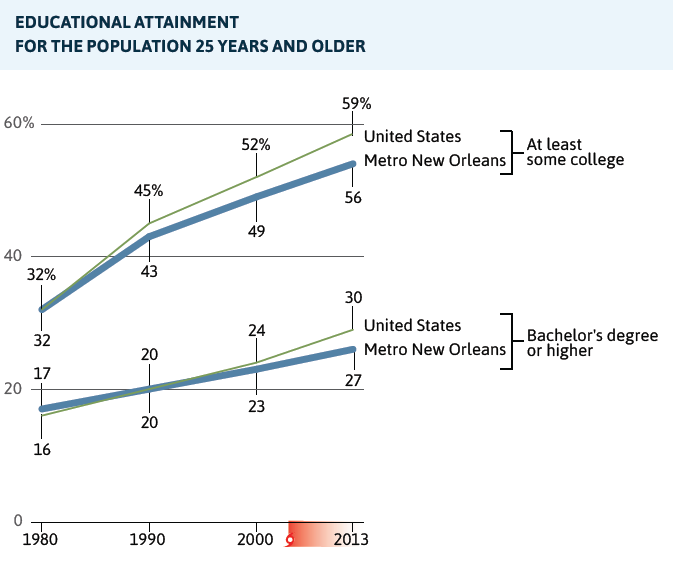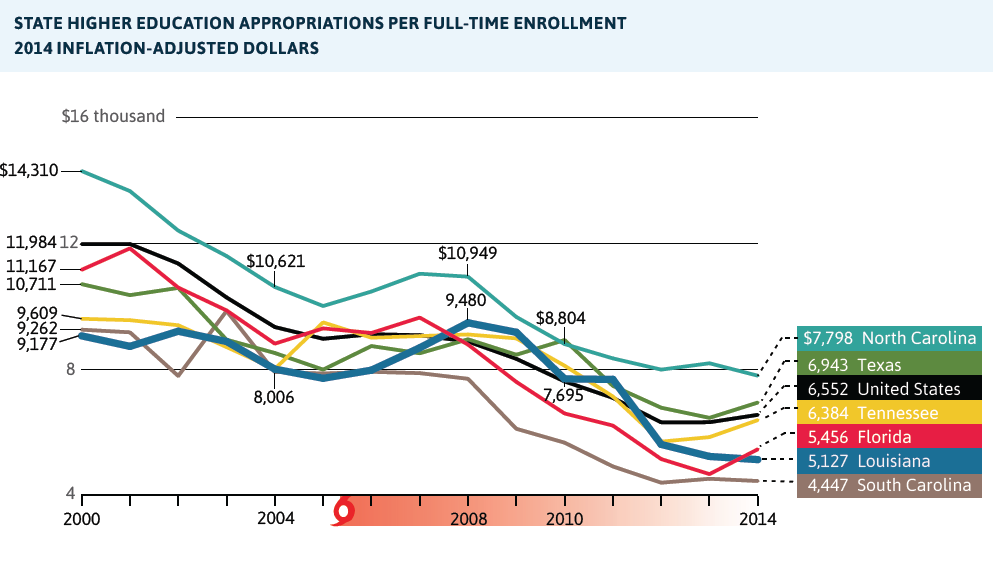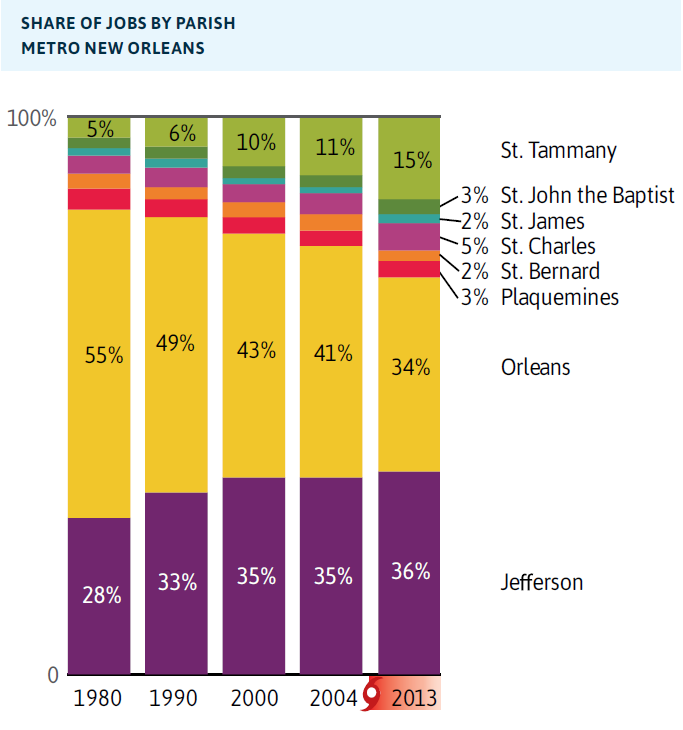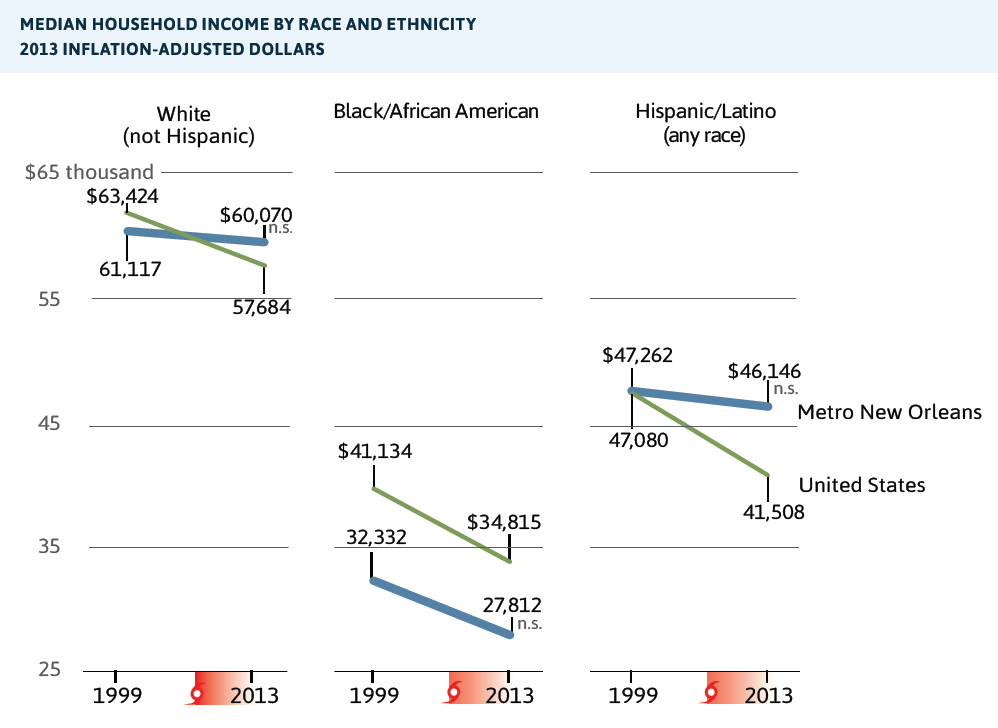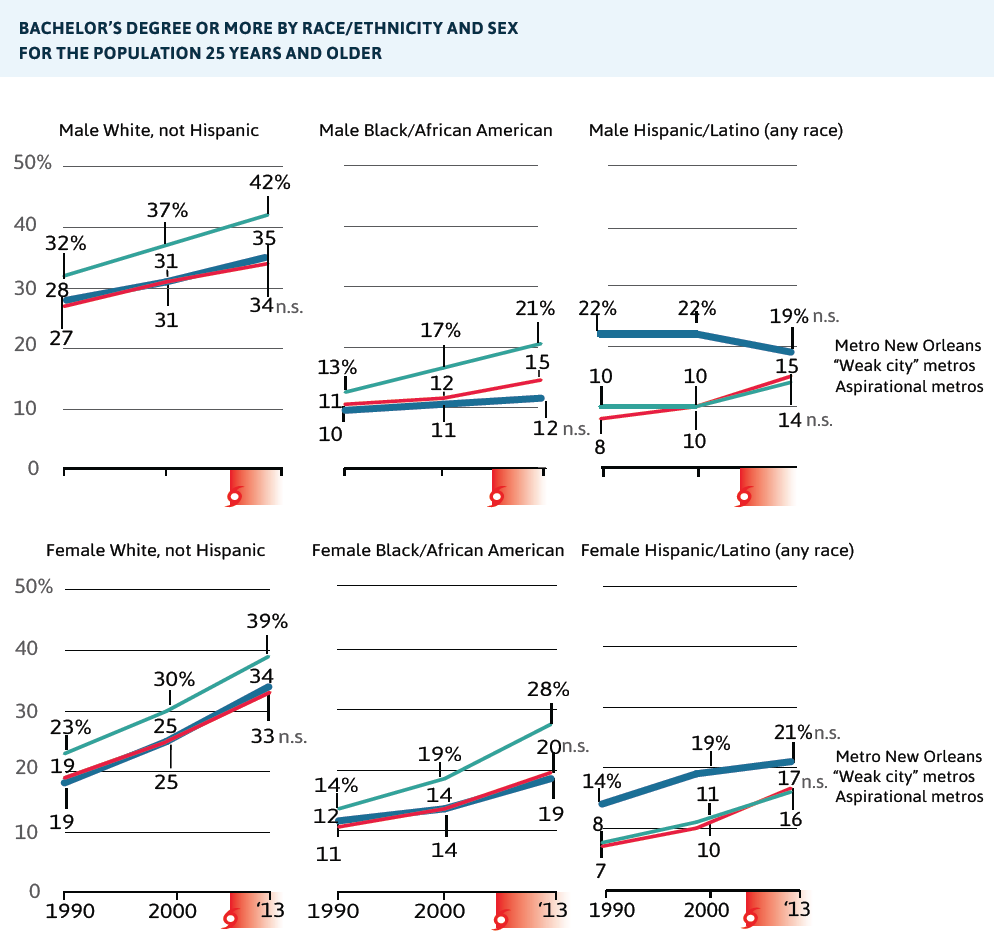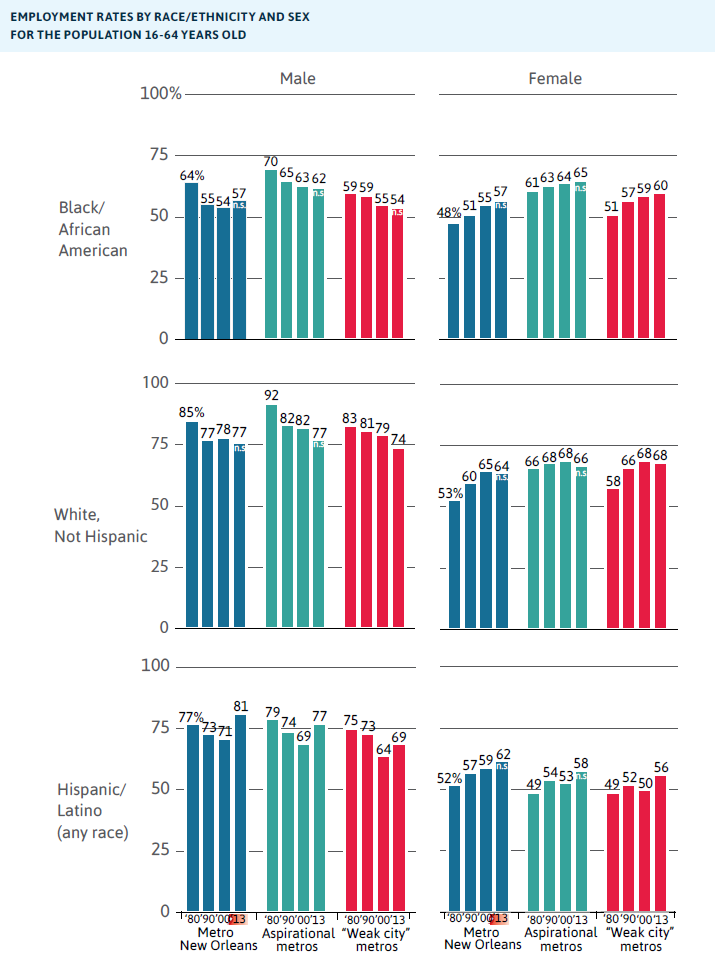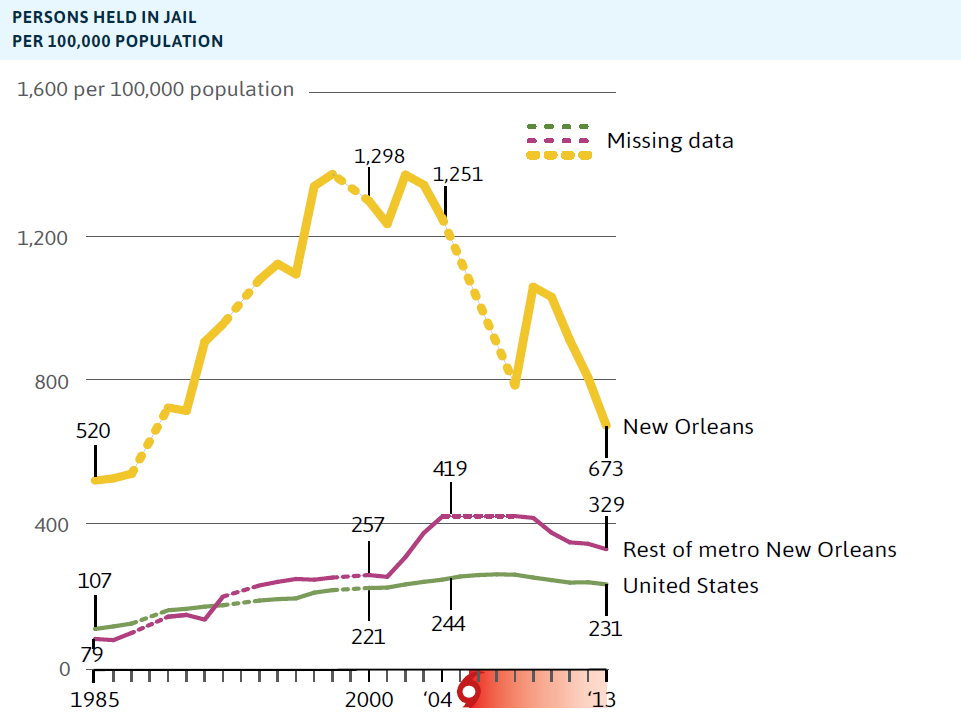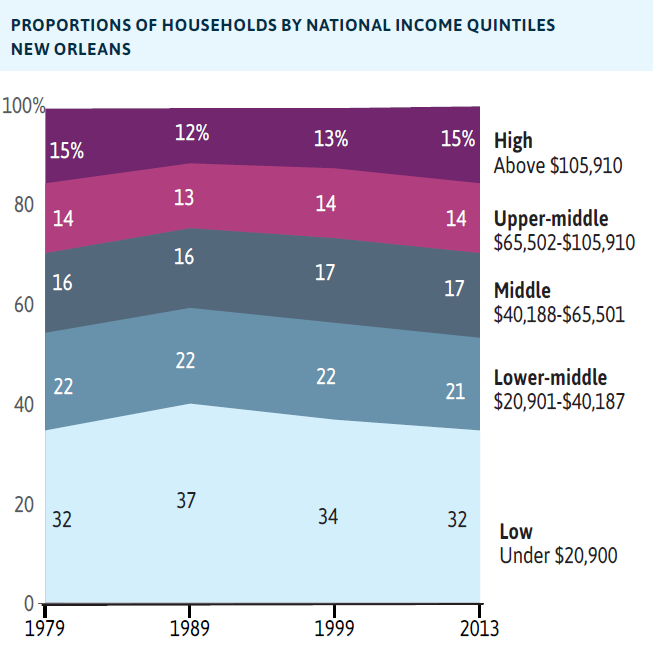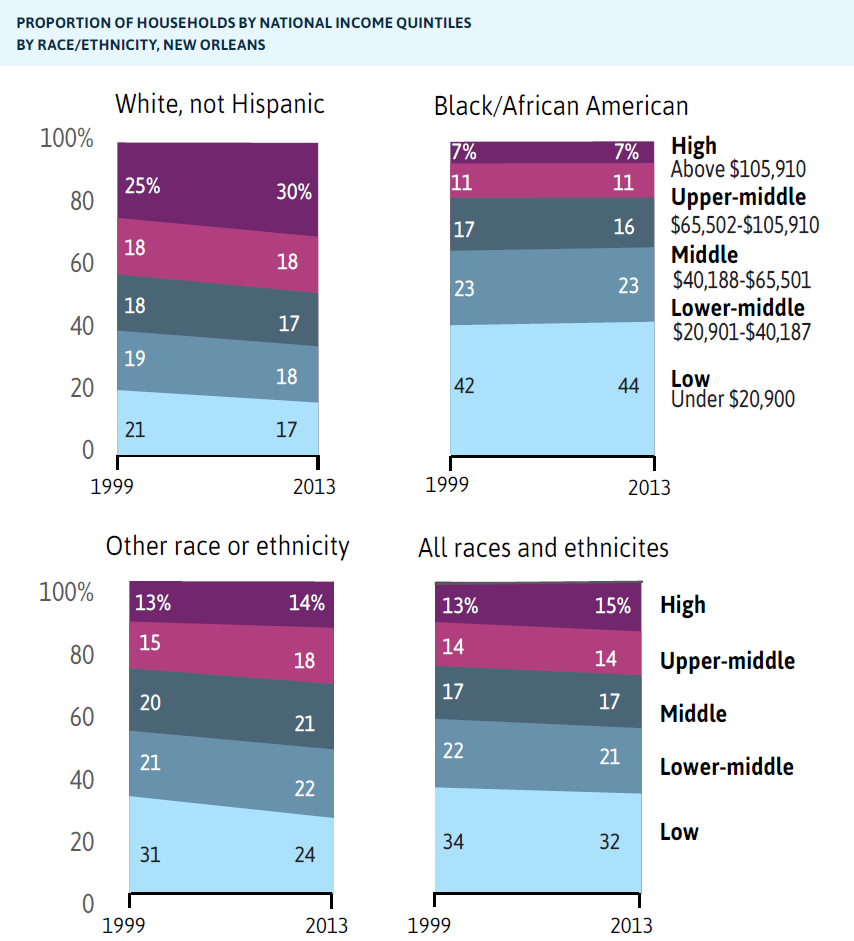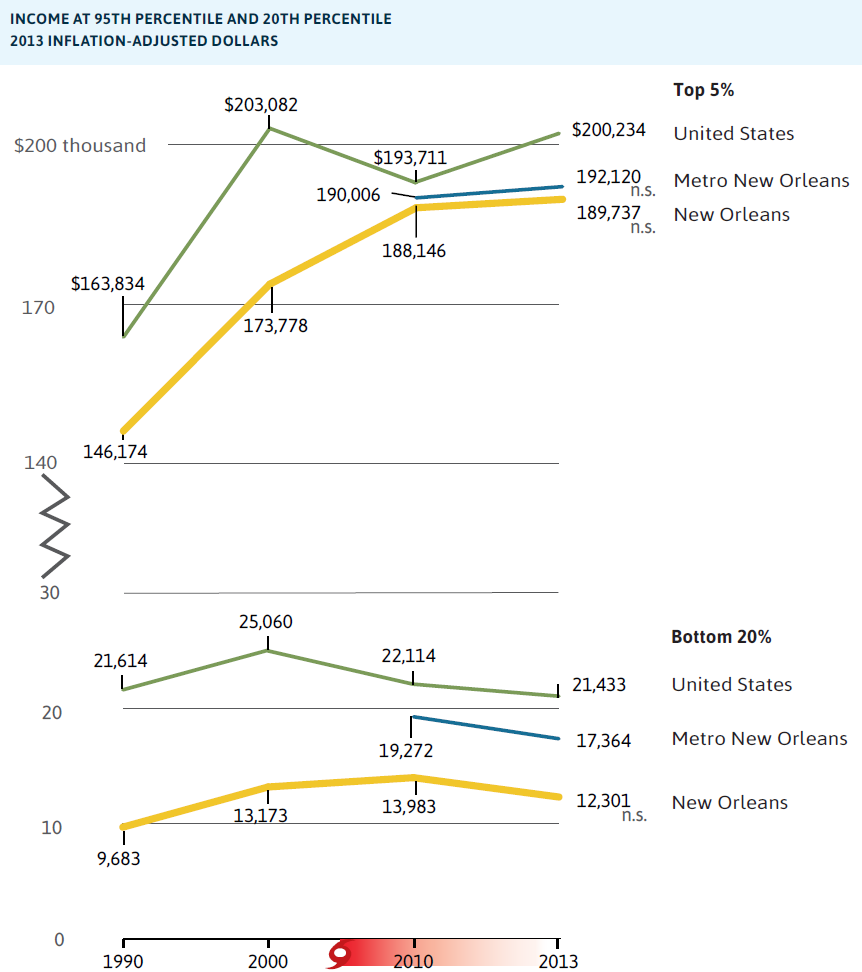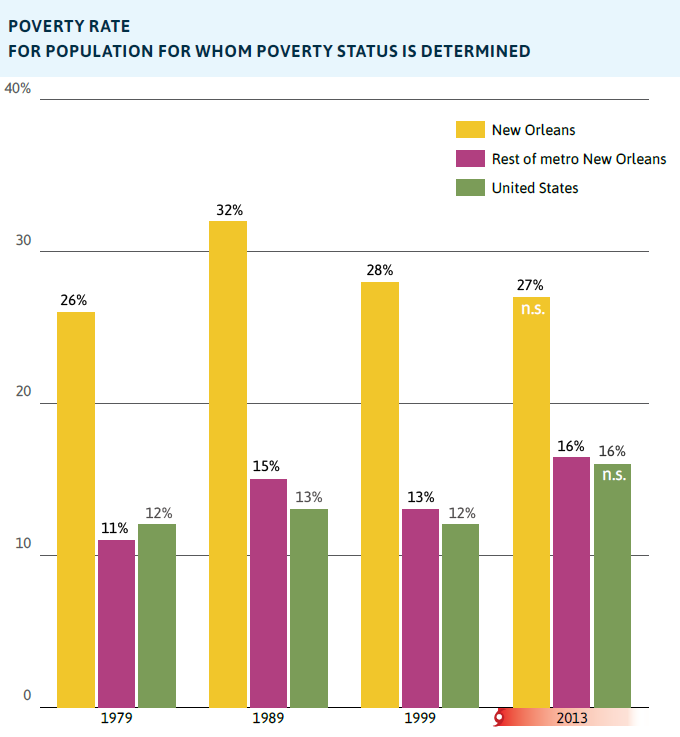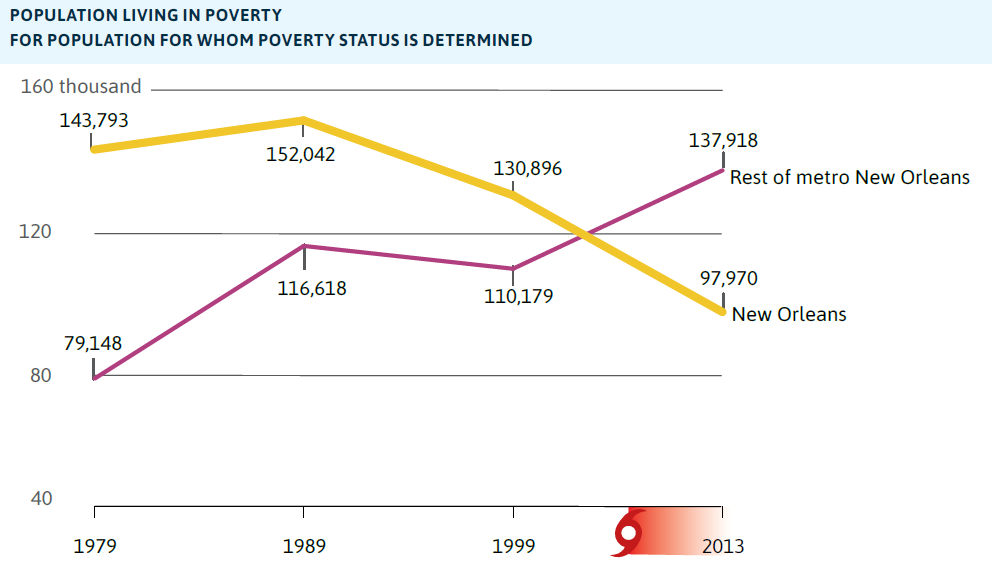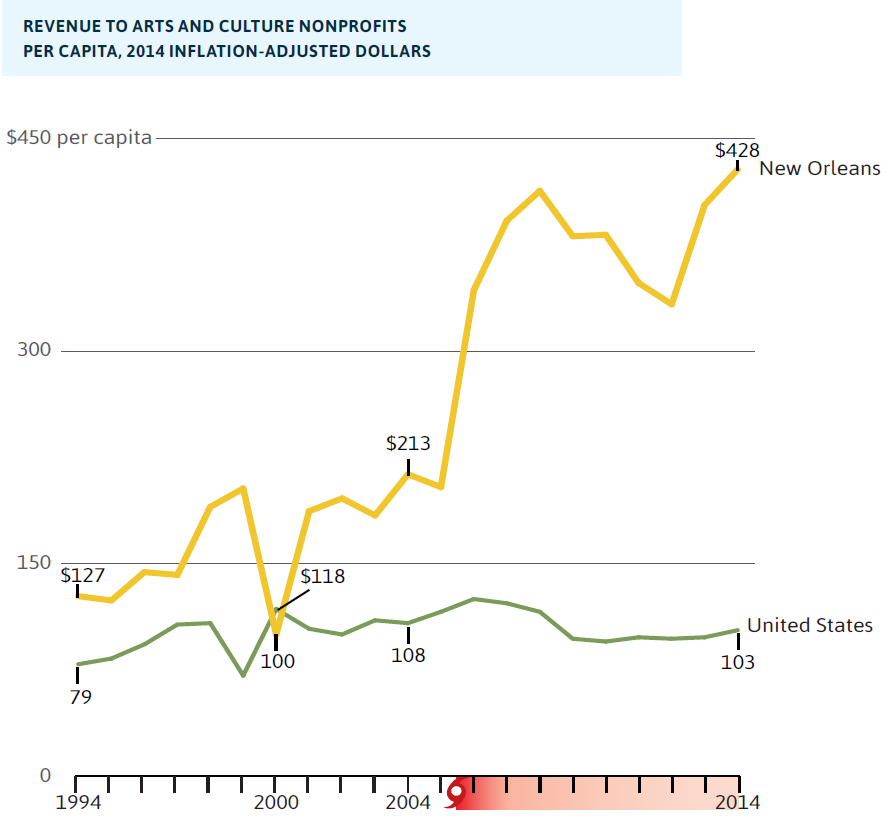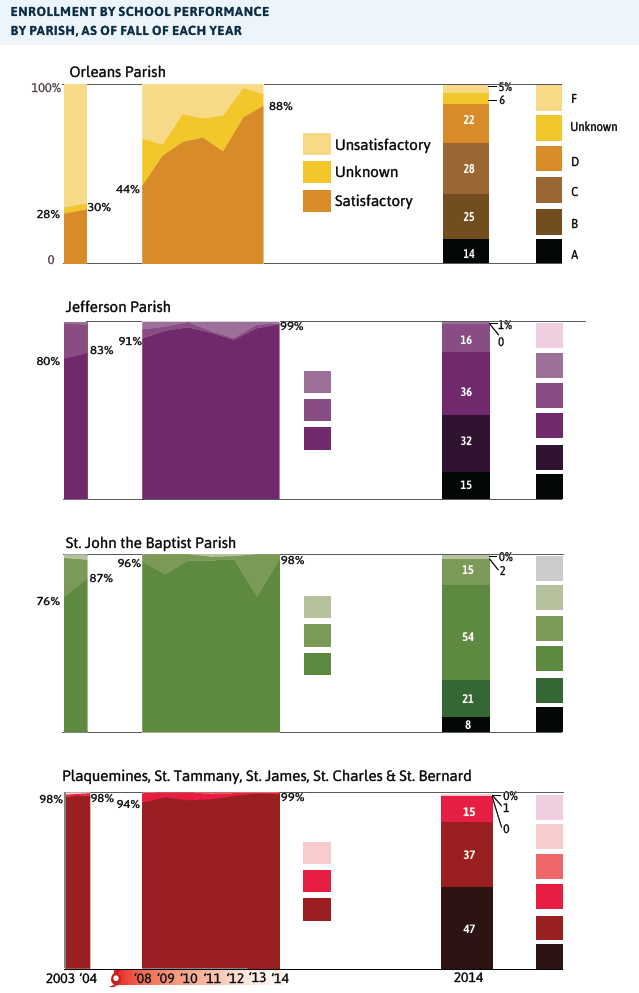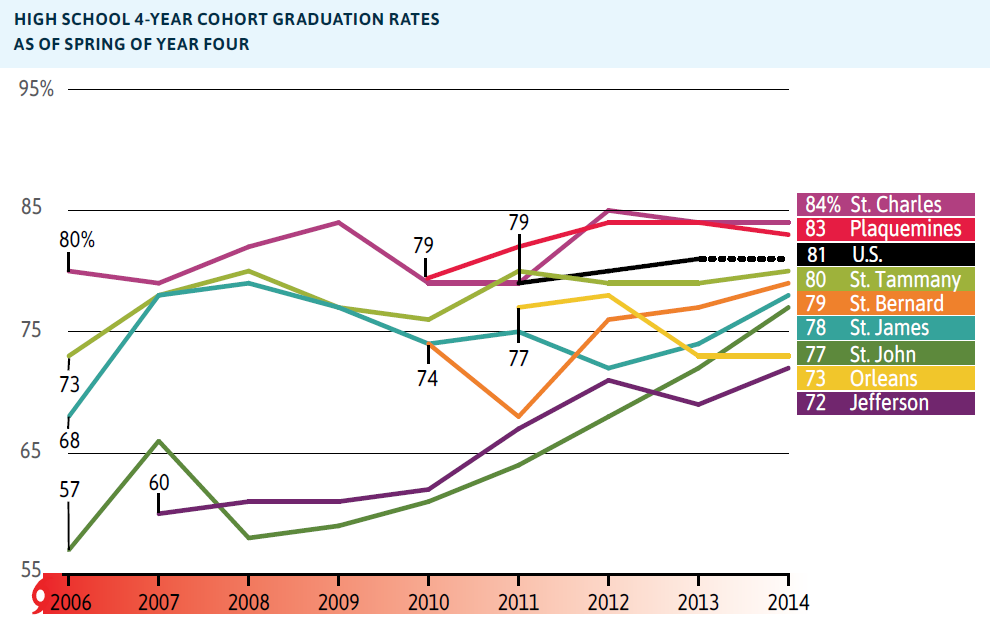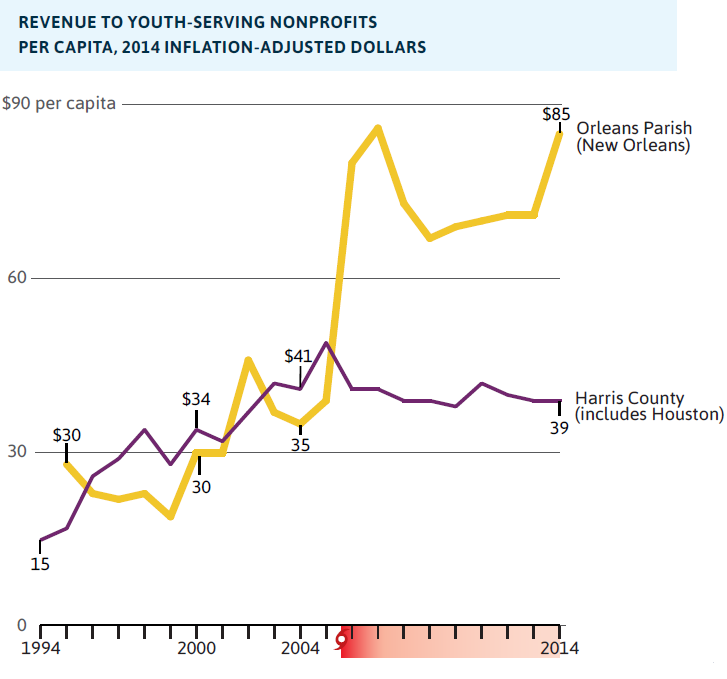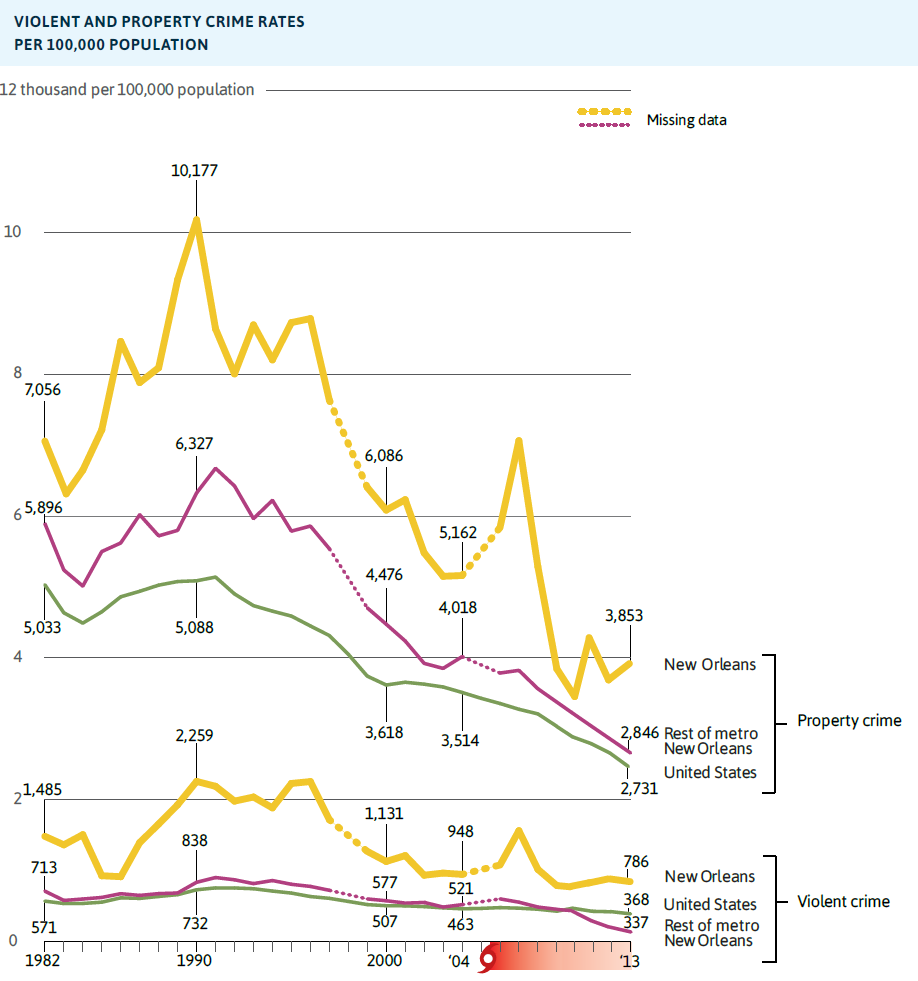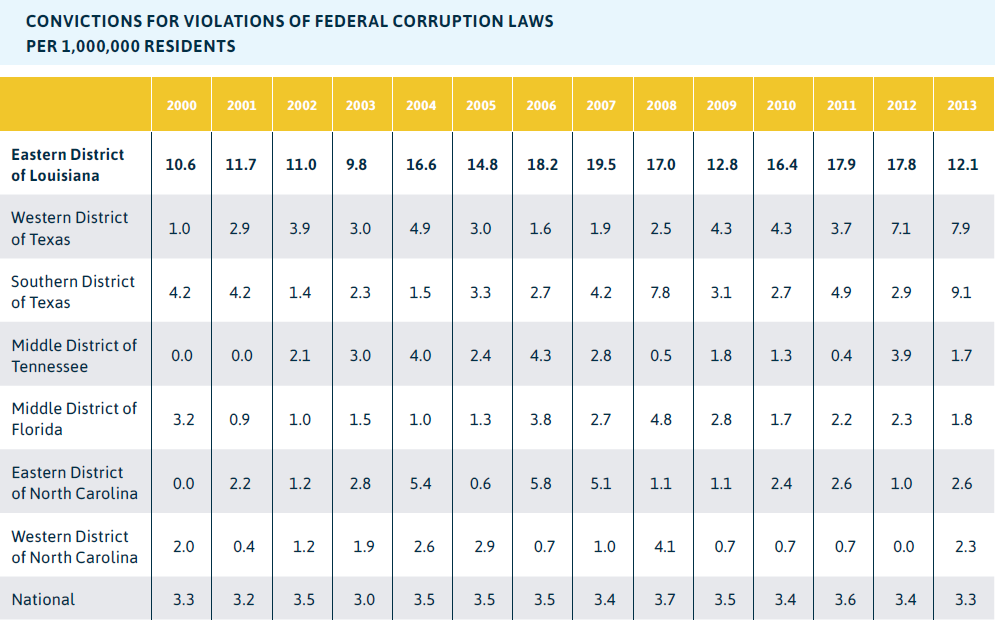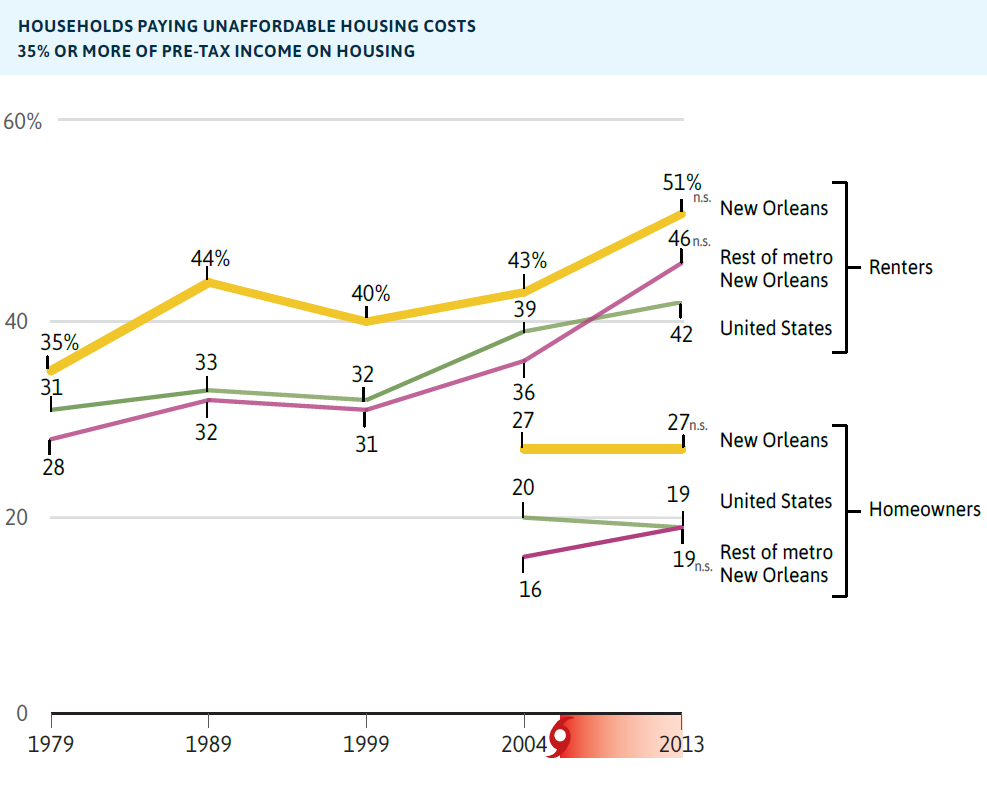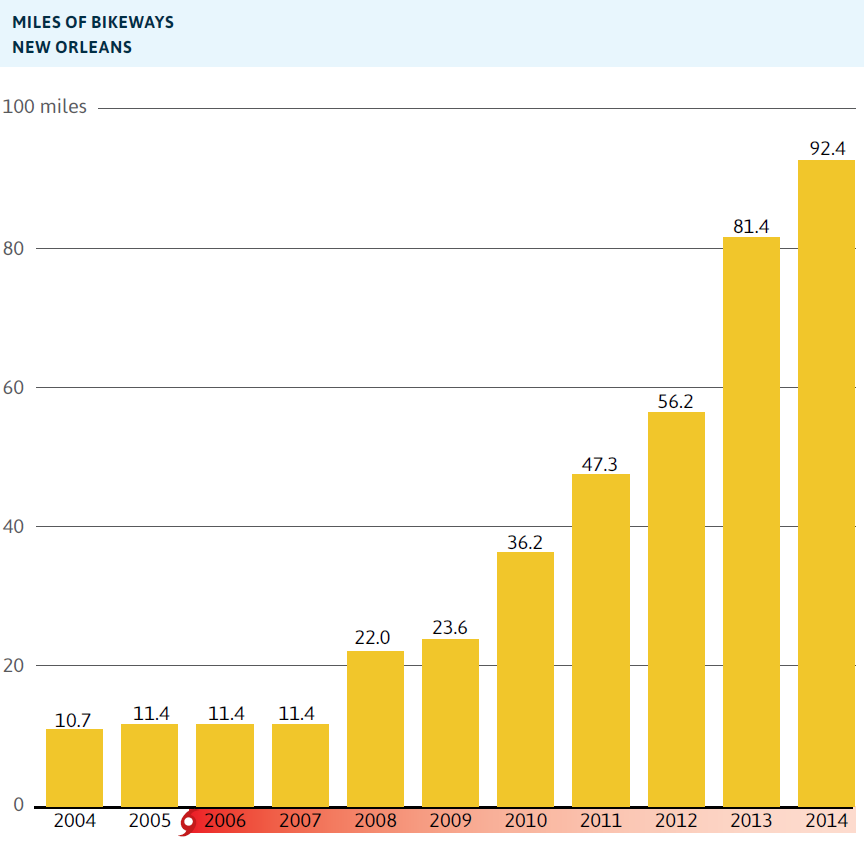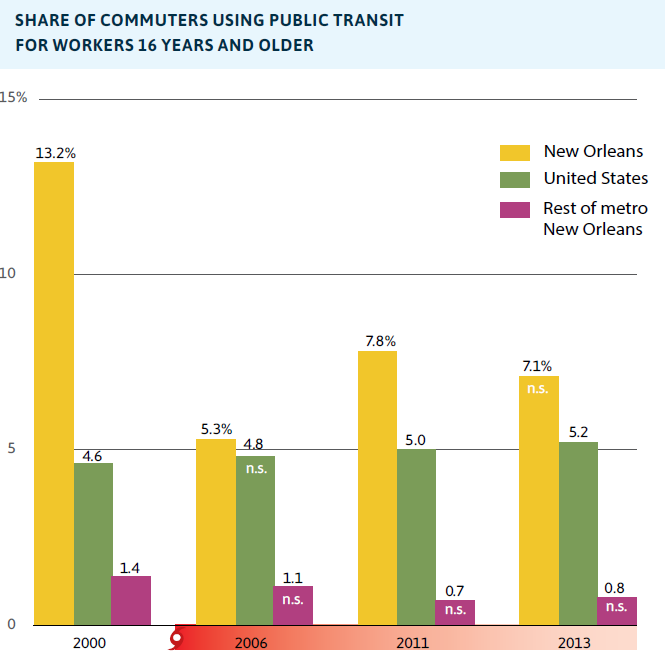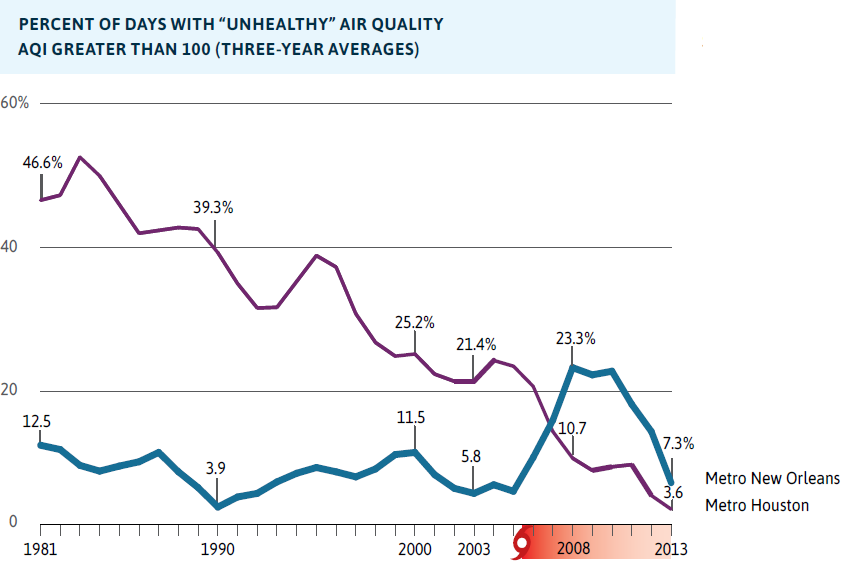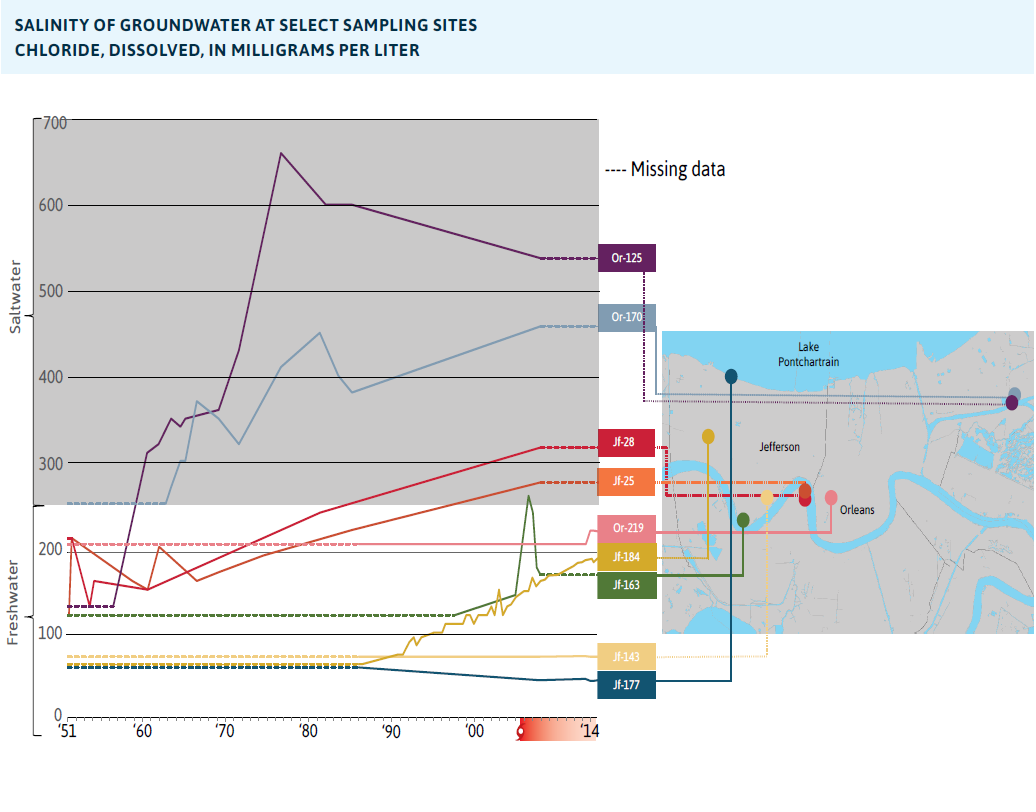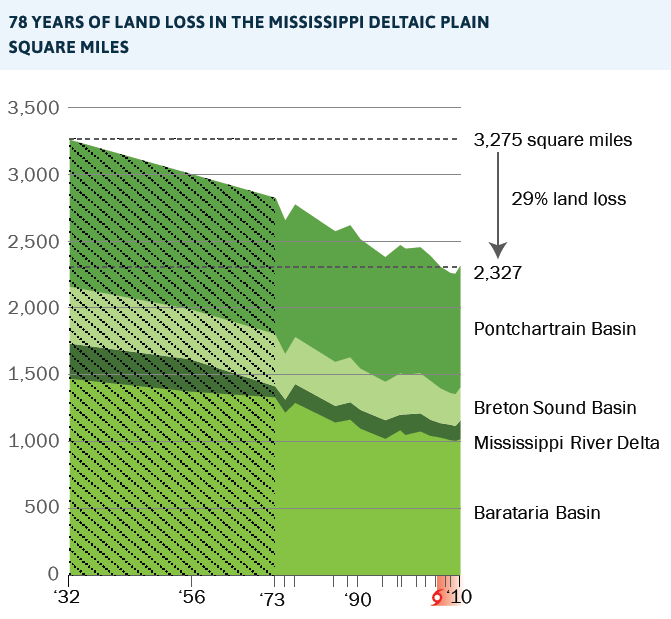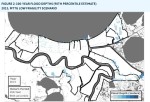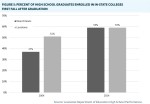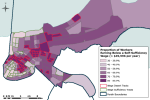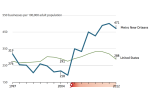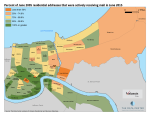The New Orleans Index at Ten: Measuring Greater New Orleans’ Progress toward Prosperity
Published: Jul 31, 2015
When Hurricane Katrina struck and the levees protecting metro New Orleans failed, the western world witnessed an unprecedented catastrophe. More than 1,000 people died, more than a million were displaced, and total damage to the region was estimated at $151 billion. But since August 2005, the world has experienced multiple large-scale disasters including the 2010 earthquakes that devastated Haiti, the 2011 Great East Japan earthquake and tsunami that killed over 15,000 people, and Hurricane Sandy in 2012, which caused over 100 deaths and $67 billion in damage along the East Coast.
Southeast Louisiana alone has experienced multiple shocks since 2005. Hurricane Katrina was followed quickly by Hurricane Rita. In subsequent years, Hurricanes Ike, Gustav, and Isaac all caused extensive flooding and wind damage across the region. And in 2010, the Deepwater Horizon explosion gushed millions of barrels of oil into the gulf, fouling miles of Louisiana’s delicate coastal wetlands—New Orleans’ first line of defense against storm surge.
Given the multiple shocks this region has suffered since 2005, the tenth anniversary of Katrina is an appropriate time to assess how the region has recovered from Katrina, and whether the city and metro area are fortifying the capacities necessary to be resilient in the face of any shock. Indeed since 2005, the prevalence of large scale disasters worldwide has drawn the attention of decisionmakers at every level. The lessons learned from New Orleans’ recovery experience can inform how the world not only responds to future disasters, but also how it builds the resiliency capacities needed to withstand any shock. Our indicators suggest that while the New Orleans economy is rebounding, and in some ways better than before, several social and environmental trends may test New Orleans’ resilience capacity in the future.
Defining Resilience
Regional resilience is composed of two related components; they are: (1) resilience performance, how well a region rebounds after a disaster and (2) resilience capacity, the region’s ability to respond to any shock.
Scholars studying disasters spanning more than a century concluded that disasters tend to accelerate pre-existing trends. This did not bode well for metro New Orleans, which had very weak population and job growth and high poverty levels pre-Katrina. However, in a few case studies, a region was able to break from historic trajectories, bouncing back better than before. The ability to rebound to pre-stress or better than pre-stress trend lines is influenced by a region’s resilience capacity.
A review of resilience literature points to several characteristics that support a region’s resiliency capacity. Certainly, strong infrastructure is an important factor. But beyond infrastructure, a number of economic and social factors impact the ability of a metro area to respond to, bounce back from, and adapt positively to any negative shock. These resiliency factors include: a strong and diverse economy; a relatively small gap between the incomes of high and low-income residents; large shares of skilled and educated workers; wealth (whether government, private, philanthropic, or individual) that can provide adaptive cushion; strong attachment to place; social cohesion between groups; community competence and problem-solving ability; strong leadership; and trust in government.
The New Orleans Index at Ten analyzes over 30 indicators reaching back to 1980 to assess whether New Orleans has broken from its historic trajectories. As such, it assesses resilience performance. It also provides crucial information for assessing the region’s resilience capacity. It reveals areas of strength and weakness across many of the factors contributing to resilience capacity, organized by economic growth, inclusive growth, quality of life, and sustainability. The Index provides critical insights for strengthening resilience in the years ahead. Our findings reveal:
Economic Growth
THE METRO NEW ORLEANS ECONOMY IS TAKING FIRST STEPS TOWARDS A NEW TRAJECTORY—WITH SUSTAINED JOB GROWTH, AN INCREASINGLY DIVERSE SET OF INDUSTRY CLUSTERS, AND HIGH RATES OF ENTREPRENEURSHIP.
- From 2008 to 2010, metro New Orleans lost only 1 percent of jobs compared to 5 percent lost nationwide. By 2014, metro New Orleans had recouped these losses and reached 5 percent above its 2008 level, while the nation reached only 1 percent above its 2008 level.
- Jobs in knowledge-based clusters have grown substantially since 2010 including in construction products & services (an essential part of the water management cluster), video production, and electric power generation, which have grown 14 percent, 90 percent, and 22 percent respectively.
- Job centers have shifted across the region. Parishes upriver and on the north shore are now home to 24 percent of all the metro’s jobs.
- By 2014, passenger enplanements in Louis Armstrong International airport surpassed 2008 levels by 22 percent—while national air traffic had recovered to only 5 percent above pre-recession numbers. In fact, by 2014, New Orleans passenger enplanements had surpassed their 2004 pre-Katrina high mark—indicating that the New Orleans airport is providing expanded connectivity for Southeast Louisiana visitors, residents, and businesses.
- The metro New Orleans entrepreneurship rate—at 471 startups per 100,000 adults during the three year period from 2011-13—is 64 percent higher than the national average, and 40 percent higher than other fast-growing Southern metros.
- Venture capital funding, which is critical to innovation and economic cluster development, has doubled in metro New Orleans from $16 per capita in 2010 to $32 per capita in 2014. But this is only a fraction of the venture capital going to startups in competitive metro Austin, where funding has consistently been over $100 per capita since 2006.
- Metro New Orleans lags the nation in producing and attracting workers with a bachelor’s degree. By 2013, only 27 percent of adults in the metro had at least a 4-year degree compared to 30 percent nationwide, and the gap between metro New Orleans and the nation has been widening since 1990.
- Job Growth
- Drivers of the Economy
- Local-Serving Clusters
- Wages
- Productivity
- Airport Traffic
- Entrepreneurship
- Venture Capital
- Educated Workforce
- State Funding for Higher Education
- Job Sprawl
Inclusive Growth
IN METRO NEW ORLEANS, EMPLOYMENT AND INCOME DISPARITIES BETWEEN AFRICAN AMERICANS AND WHITES ARE STARKER THAN NATIONAL DISPARITIES, AND POVERTY IS INCREASING IN SURROUNDING PARISHES—UNDERMINING SOCIAL COHESION AND RESILIENCE CAPACITY ACROSS THE REGION.
- The median income for white households in metro New Orleans is on par with white households nationwide, but the median income for black households in metro New Orleans is 20 percent lower than black households nationally. Thus in 2013, the disparity in incomes between black and white households was 54 percent, compared to 40 percent nationally.
- Employment rates for white men in metro New Orleans, at 77 percent, are on par with fast-growing Southern metros. In contrast, with just 57 percent employed as of 2013, black men in metro New Orleans have employment rates that are significantly lower than fast-growing Southern metros, where 62 percent of black men are employed.
- Jail incarceration rates in New Orleans have fallen from five times the national rate in 2004 to roughly three times the national rate in 2013. Excluding state prisoners, the Orleans Parish incarceration rate was still more than twice that of the nation as of 2013.
- The share of New Orleans’ white households in the top national income quintile expanded from 25 percent in 1999, such that by 2013, 30 percent of white households earned more than $105,910. In contrast, black households experienced no growth in the top earning tier. Instead, black households experienced growth only in the lowest national income tier. In 1999, 42 percent of New Orleans’ black households earned in the lowest national income quintile. By 2013, 44 percent of black households earned in the lowest tier (less than $20,900).
- The share of the metro’s poor that live outside the city continues to expand—growing from 46 percent in 1999 to 58 percent by 2013.
- Median Household Income by Race/Ethnicity
- Educational Attainment by Race/Ethnicity and Sex
- Employment Rates by Race/Ethnicity and Sex
- Jail Incarceration Rates
- Size of City’s Middle Class
- Size of City’s Middle Class by Race/Ethnicity
- Income Inequality
- Poverty Rates
- Suburbanization of Poverty
Quality of Life
NEW ORLEANS HAS SEEN A SURGE IN YOUTH INVESTMENTS, INCREASED CONVICTIONS OF PUBLIC CORRUPTION, AND MUCH NEEDED REDUCTIONS IN CRIME AND IMPROVEMENTS IN SCHOOLS—ALL OF WHICH MAY YIELD INCREASED COMMUNITY COMPETENCE AND PROBLEM-SOLVING CAPACITY IN THE YEARS AHEAD.
- Per capita revenues to arts and culture nonprofits doubled from $213 in 2004 to $428 in 2014, and revenues to youth development nonprofits nearly tripled from $35 per capita in 2004 to $85 in 2014.
- In 2004, only 30 percent of students in New Orleans attended schools that passed state standards. Ten years later, 88 percent of students attend satisfactory schools in New Orleans. However, a more refined analysis reveals that only 39 percent of New Orleans students are in schools rated “A” or “B.” In Jefferson Parish, only 46 percent of students are in “A” or “B” schools.
- Although the quality of public schools are increasing, graduation rates across the metro remain low, indicating that more needs to be done to improve youth out- comes. Public schools in six of eight metro parishes have graduation rates consis- tently below 80 percent.
- In 2004, violent crime rates in New Orleans were almost twice the national average. By 2013, both local and national violent crime rates had fallen by 17 and 21 percent respectively.
- Even before Katrina in 2004, federal corruption convictions picked up pace in the New Orleans area. From 2004 to 2013, there were an average of 26 corruption convictions per year, well above the 18 conviction annual average from 1998 to 2003— indicating a stepped up effort to enforce corruption laws in the region.
- Arts and Culture
- Public Education
- High School Cohort Graduation Rates
- Youth Investment
- Public Safety
- Public Corruption
- Housing Affordability
Sustainability
EXPANDING BIKE LANES POINT TO GREATER APPRECIATION FOR SUSTAINABILITY. BUT DISAPPEARING WETLANDS AND ENCROACHING SALINITY PUT A SPOTLIGHT ON THE IMPORTANCE OF COASTAL RESTORATION AND URBAN WATER MANAGEMENT.
- Bike lanes and pathways have increased more than eightfold in New Orleans from 11 miles in 2004 to 92 miles in 2014.
- The share of commuters using public transit in New Orleans is only 7 percent in 2013, down from 13 percent in 2000, and in the rest of the metro, the share has remained flat at barely 1 percent since 2000.
- Not only has the metro lost 29 percent of the coastal wetlands that protect it from storm surge since 1932, but measurements within the levee walls since 1951 demonstrate that saltwater is encroaching, with eight of nine groundwater sample sites registering increasing salinity.
- Bike Pathways
- Commuting by Public Transit
- Air Quality
- Groundwater Salinity
- Coastal Wetlands
Conclusion
Ten years after Katrina, the regional economy is embarking on a new path, benefitting from new infrastructure investments, a more diverse set of clusters, and an entrepreneurship boom. The region has solidified its commitment to culture with revenues to arts nonprofits now four times the national average. Similarly revenues to youth development nonprofits have doubled, and public school improvements are measurable. Importantly incarceration rates have dropped by nearly half as the city has dedicated itself to reforming its criminal justice system. New Orleanians have worked hard to not only rebuild, but to transform and better their institutions. By many accounts, New Orleanians’ love of their home, high levels of citizen engagement, and dedication to improving their community have been key strengths that have fueled the region’s resilience.
Despite economic and reform-driven progress, however, the poverty rate in New Orleans has risen to pre-Katrina rates and is now a crushingly high 27 percent. In the surrounding parishes, the poverty rate has grown to 16 percent. While white males have seen increasing employment rates, black males have not, and by 2013, black households earned 54 percent less than white households in metro New Orleans. On these and other indicators of inclusion, metro New Orleans is performing worse than the nation and other fast-growing southern metros. But the most existential issue that New Orleans faces is coastal erosion and sea level rise. Since 1932, the New Orleans region has lost nearly 30 percent of the land that forms its protective buffer from hurricane storm surge, and saltwater is increasingly infiltrating groundwater within the levee walls.
New Orleans has a unique opportunity this August to both celebrate hard-earned successes and continue to confront systemic challenges. There is great momentum behind reforming public education, land use, housing, and criminal justice systems. These efforts should be built upon to address unfinished business. Greater access to data is needed to enhance transparency, build trust in government, and inform improvements. To address entrenched disparities, greater connection to opportunity is needed. Networks of businesses and education institutions can work together to develop a long-term plan to increase adult educational attainment and reverse declining investments in higher education. And regional connectivity will be essential to increasing economic mobility as jobs expand in outlying parishes.
On the eve of this 10th anniversary of Katrina, a historic settlement offer from BP for the 2010 Deepwater Horizon oil spill promises to bring billions more dollars to Louisiana—the majority of it already committed to coastal restoration and protection. Starting next year, BP will begin paying off the largest environmental settlement with a single entity in American history. Louisi- ana is slated to receive anywhere from $6.5 to $8.7 billion, with at least $5 billion required to be spent in Southeast Louisiana, where the most environmental damage occurred. At the urban level, New Orleans is investing in its water management assets and green infrastructure, with billions of federal and local dollars to be spent by the Sewerage and Water Board in the next decade to improve pumps, canals, and drains.
Significant cultural shifts toward accountability, especially given the influx of settlement money and continued investments in infrastructure, will be required to truly set New Orleans on an aspirational path. By dedicating sustained effort to building civic momentum, increasing skilled workforce, and accelerating innovation investments, leaders can leverage the state’s 50 year, $50 billion coastal master plan and the award-winning Greater New Orleans Urban Water Plan to create a self-sustaining economic cluster. Done well, this funding could have multiple positive impacts. Water management could not only fortify the regions’ defenses against hurricanes, but also boost economic diversification, and provide employment for a diversity of workers. With the right innovation ecosystem and a well-trained and well-educated workforce, New Orleans could lead the way in managing and living with water, challenging Dutch dominance in this field, just as sea level rise threatens coastal economies around the globe.
As New Orleans prepares for its tricentennial in 2018, leaders and residents must harness the unique diversity and love of home for which their city is known, to model openness and interaction across groups that is manifested in more inclusive economic prosperity. At the end of the day, to ensure resiliency, New Orleanians must simultaneously restore their coast while growing prosperity that benefits broader segments of the population. If successful, New Or- leans’ efforts will serve as a global demonstration of deliberate adaptation to the challenges that many cities will face in the century ahead.
Continue to read the full report [Download PDF]
Citations and sources can be found in the PDF copy of The Index.


